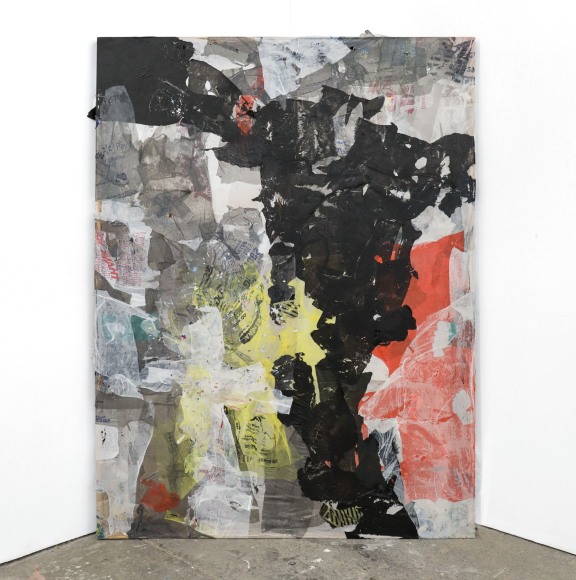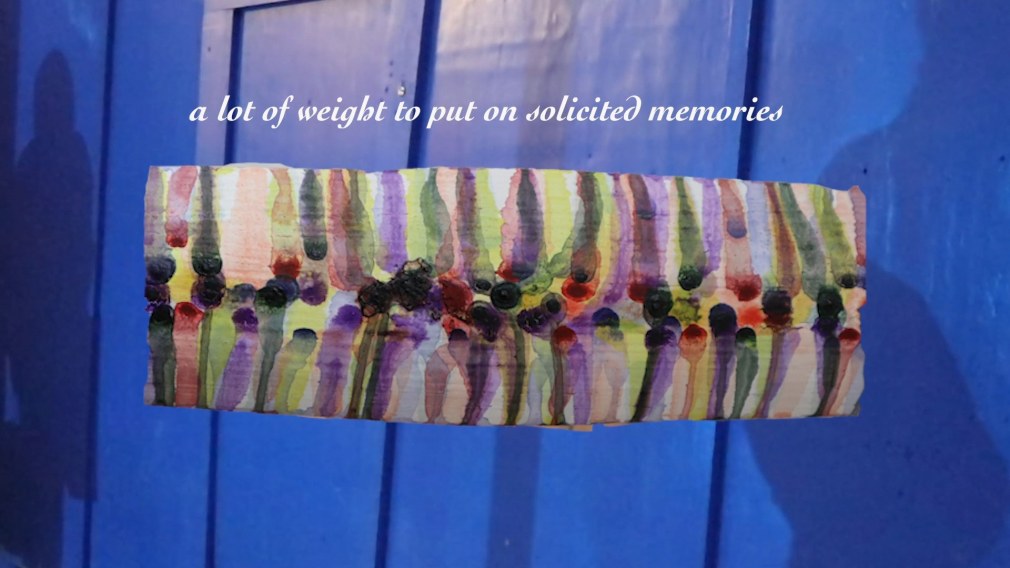Art that rises to meet its moment is rare, and shifting moments are difficult to describe. The Cornell University MFA class of 2020, who I worked with as a mentor last fall, converges for its thesis exhibition with a wish to reflect and deflect existing histories while asserting fresh ideas. Never abandoning material tactility, these artists are socially conscious and content driven but also object makers. To that end, much of their work is topical, or leans so—interrogating and embracing culturally relevant themes as well as personal attachments to both form and medium.
In the large-scale works of Alexis White, discarded plastic bags are heated into malleability, flattened, and then reformed into unexpected substrates. Subverting the language of canonized abstraction, White’s objects are unlikely “paintings” as they recast throwaway fragments as organic, natural-seeming, tableaus. The mixed media works of Grace Sachi Troxell also center one material—in this case, clay—as the ancient storyteller in a contemporary tale of ritual, waste, and decay. By juxtaposing the high crafts of casting and firing against the intimacy of wrapping and encasing, Troxell’s objects are at once familiar and otherworldly; historically observant and wholly irreverent.
Tina Lam’s geomorphic constructions, while reminiscent of systems found in nature, are completely invented—as if one’s mind’s eye were to draw in space. Transforming industrial materials, Lam extracts minimal forms from the chaos of memory, meditation from agitation. Morgan Evans-Weiler’s works share an interest in line as a content carrier. In his sculptures and installations, light bars, string, and wire act not only as physical connectors, but energy transmitters. These improvisational works are tools for seeing and unseeing, imagining and reimagining. The videos, textiles, and graphic works of Yasmeen Abedifard traverse Islamicate history and iconography to delicately explore gender and sexuality with lyrical line work and hand-written text. Investigating an intricate personal connection via gifs and cartoons bound into graphic novels, Abedifard’s works weave together past and present, underscoring universal themes of love, loss, desire and spirituality.
Kirk Henriques’ paintings, aptly rendered in ever-accessible house paint, examine America’s largely untold history of racially motivated violence and exclusion. Caught in moments of tender one-on-one connection, his figures communicate in densely layered passages of paint that feel distressed or peeled back to reveal their sources. Emma Ulen-Klees posits the American landscape as, from a cartographic perspective, dissected. The results are haunting, fragmented drawings and prints that re-imagine the country we thought we knew as a quasi-measurable, imperfect experiment. That tenuous local/global relationship is borne out in the works of Ege Okal, whose videos and raucous, large scale installations posit public spaces in upstate New York, Brazil and her native Turkey as settings for investigating systemic power structures, ownership, and patriarchal oppression.
The oil paintings and etchings of Xiaoyao Yao reveal a complex and contemplative inner world. Real and imagined conflate in interior spaces where light is shined on the often ignored—a dim corner, a network of pipes, or a table of seemingly mundane objects. Conversely, Paloma Vianey Martinez uses painting as a direct instrument. When coupled with brightly hued, patterned fabric, her oil paintings highlight the myriad cultural contributions Mexico has made to the United States by way of pictorial space bordering on object—shrine-like, openly nostalgic, and forthcoming.
Patrick Brennan’s paintings and objects are portals to a trippy, un-tethered dimension where synthetic color and organic surfaces collide, synthesize and collide again. His signature Popsicle sticks and unfussy painterly gestures jump between two- and three-dimensions, emphasizing each mark’s independence and mutability. In Brennan’s world, everything exists at once and is non-hierarchal. The works of Ciara Stack also mine the relationship of raw art materials with the so-called “real world,” which manifests anthropomorphically at times and abstract at others. Her sculptures receive cameos in her videos, a tactic that intertwines handmade objects with the fragmented prose from which they came.
Collectively, the works of Cornell’s MFA 2020 class span themes that are personal and universal, regional and global, individual and shared. There is no evidence of an overarching style, school of thought, or hive mind. Instead, the works are refreshingly unique; custom-crafted to reflect an inexplicable moment—one that is tenuous and flawed but, ultimately, optimistic.
—Wendy White, July 2020























